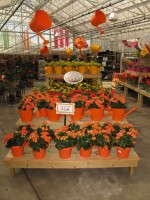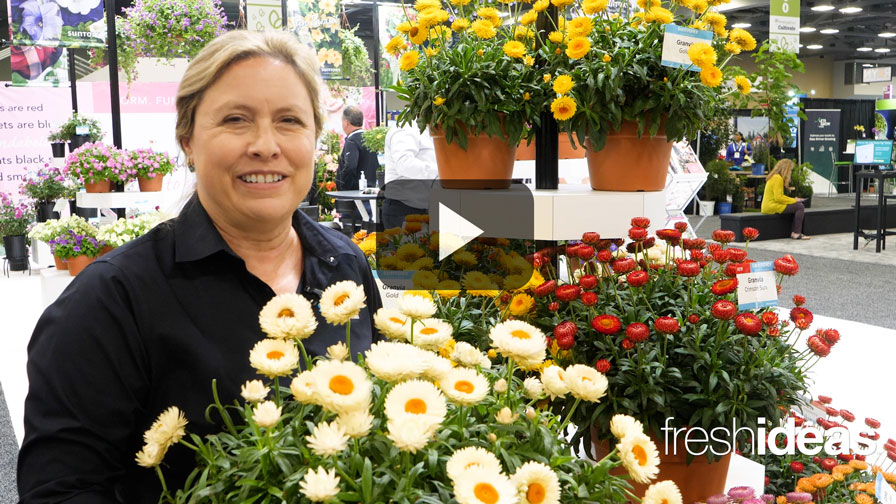Your Most Profitable Plants Can Depend On Sales Volume, Plant Size

I have a favorite axiom about the digital products we offer you, our readers — give them more of the content they like and less of what they don’t. The same axiom could be applied to the crops you grow with a slight twist — give your customers more of the plants they want that generate the most profit.
You grow a lot of plants, but which ones make the most profit? I talked to a few growers to find out which are most profitable for them and how they determine which are hits and which are misses.
The Bedding Plant Grower: Volume Counts
For Casa Verde Growers, Columbia Station, Ohio, the wholesale operation for Petitti Garden Centers in northern Ohio, the most profitable plants are born from a formula: marketing, pricing and promoting.
Casa Verde’s Wayne Cousins says for the 20 years he’s been with the company, hanging baskets have been the profit and sales leader.
“That’s what we sell the most of and make the most total dollars on,” Cousins says. The operation grows about 200,000 baskets per year in two sizes — about 85 percent are 10-inch baskets, with 12-inch baskets making up the difference. This ratio reflects the price point customers in the Cleveland area are willing to spend.
Petitti’s philosophy is that the average consumer has X number of dollars to spend on household items or discretionary spending per weekend. They can get more bang for their buck with three or four 10-inch hanging baskets than one or two 12-inch baskets.
“In this economy over the last few years, we see this a lot,” Cousins says. “And if it rains, that $20 or $50 goes to the movies or towards buying clothes.”
About 80 to 95 percent of the baskets Casa Verde grows are sold at Petitti’s retail stores. The rest are sold to other small garden centers and a smaller portion to landscapers. Cousins says unbranded material is the operation’s most profitable.
If he had to choose one plant from the baskets that make the most profit, Cousins says it’s probably Wave petunias because they’re grown from seed. He says plugs cost around 25 cents each and Casa Verde grows Waves in 4- and 8-inch pots and 10-inch baskets.
For Casa Verde, the demand for higher-priced items is much smaller.
“Once you get past a certain dollar volume, sales go down,” Cousins says. “If we offer a $75 19-inch pot that looks gorgeous, you might sell 200, where if you sell a 12-inch at $34.99, you’ll sell 1,000. It’s more about price perception. Plus, it doesn’t fit our operation very well to do really big stuff.”
The Perennials Grower: Bigger Is Better
The story is a little different at Plant Delights Nursery, Raleigh, N.C. Here, bigger is better. For this grower/retailer of rare perennials, the bigger plants make the most profit.
The most profitable plant for Plant Delights is Colocasia ‘Thailand Giant,’ which grows to nine feet tall with individual leaves that grow in excess of 5 feet long and 4 feet wide. Since introducing it in 2004, ‘Thailand Giant’ has generated more than $111,000 in sales for Plant Delights.
The nursery sold 560 of the plants at $20 retail in 2004 and could have sold 500 more, owner Tony Avent says. The price on ‘Thailand Giant’ peaked at $25 in 2006 and 2007 before declining to its current price of $16 for a 4-inch pot. Plants like trilliums and hardy cypripedium orchids pale in comparison to sales figures like these, Avent says.
“People equate size with value, so the fact that ‘Thailand Giant’ gets so huge so fast, it has high value for the customer,” Avent says. Avent says he heard from wholesalers who finish a 5- or 10-gallon pot in about eight to 10 weeks and then sell it for $50 to $100 each.
“Smaller plants will never have the same value as larger plants,” he says. “It’s just human nature, and that’s not something you can change. There are always small groups of specialists that will pay large money for small plants, but that’s a very tiny fraction of gardeners. That’s why the trend of breeding small plants is counterproductive to profitability.”
Factors That Affect The Profitability Of Plants
There are several factors that affect whether or not a plant is profitable for a grower. Matt Altman of Altman Plants, Vista, Calif., says the input costs of plants are only part of the equation. Perceived value at retail also affects profit quite a bit.
Using Altman’s scale of the how profitable a certain plant is, which plants are more profitable for your operation?
• Residency time
• Input costs
• Production yields
• Environmental requirements, such as heating
• Ready window. “How long the plant remains in selling condition gives more opportunity to sell it,” Altman says.
• Consistency of historical demand, which minimizes risk of scraps
• Innovation in breeding, marketing and packaging that enhance perceived value beyond the cost of the investment









